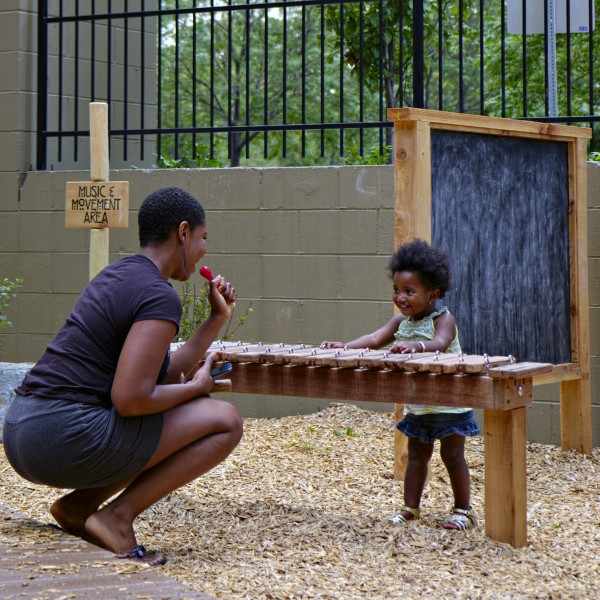Nuggets from 2016 (Part 1)

Each year, nuggets of information fly by in our blog posts. Some are practical tips on using your outdoor classroom. Some are inspirational examples of how other educators use theirs, or of children’s transformations in nature.
In reviewing the posts from 2016, we’ll look at some of the nuggets, the practical or inspirational ideas that could empower your great work with children. The list will be segmented by blog post. This list of ideas will not be all of the great ideas from each post. When you see helpful ideas, click on the title for the original post.
Nature’s Icebox – Ideas for Play in a Cold Weather Outdoor Classroom
By Heather Fox
- In below freezing temperatures add colored ice cubes to your Nature Art Area. Make structures and patterns.
- Trace designs on new fallen snow using sticks, pinecones, and other natural objects.
- Add Christmas trees that would otherwise be discarded to your Messy Materials Area.
- Encourage whole body expression by asking children what they would look like if they were snowflakes, and how they might move.
Natural Wood: Lessons and Gifts
By Jim Wike
Give careful consideration to species selection and be aware of the sustainability impacts of your choice.
- Keep a simple 4-way wood rasp (looks like a file) in your storage area, along with a small sheet of 100 or 150 grit sandpaper. Use it to take care of rough spots before they become bigger problems.
- As part of your daily walk-thru look for insects (the mean ones!) and eliminate their early nests before they cause larger problems.
- Let loose parts such as tree cookies and log sections remain uncoated. Their natural process of decomposition provides wonderful learning opportunities (turning back into dirt).
Car Mittens vs. Snow Mittens
By Diann Gano, Nature Explore Certified Classroom owner: Under the Gingko Tree
Solicit outgrown winter clothing from families.
- Use the ‘suiting-up’ for the cold outdoors as a lesson in sequencing and self-independence.
- ‘Car mittens,’ made of fleece or wool, don’t work as well in outdoor classroom play as nylon ‘snow mittens,’ that cover the wrist. The right mitten allows longer and more comfortable play.
At the Developmental Disabilities Institute — Experiencing is Believing
By Dexter Lane
- Seeing is believing. If you are trying to convince teachers or administrators who are skeptical of the outdoor classroom concept, take them to see one in operation.
- When working with children who have special needs, occupational therapy outdoors adds opportunities not available indoors. For example, working with emerging walkers using the many textures and grades available in your outdoor classroom.
- Children diagnosed on the Autism spectrum, or with ADD, often function more productively outdoors than inside.
Music and Nature: A Natural Combination
By Heather Fox
Nature provides inspiration for a child’s self-expression through music, song and body movement. The openness of outdoor environments inspires children to use their entire bodies expressively and creatively, whether in an outdoor classroom or in a backyard. Gathering instruments into these spaces ensures that creative expression will follow.
Indiana: The State of Outdoor Education
By Dexter Lane
Advocacy by local members for support for nature-based education was presented to the Executive Director of the Indiana State Association for the Education of Young Children (AEYC), Dianna Wallace, (already a passionate supporter of the idea). The Indiana AEYC has embraced the concept of outdoor learning, and is facilitating its spread throughout the state.
- Advocacy for nature-based education can and has produced true change in large systems.
- Resources with expertise in the subject add importance and credibility to advocacy. (The education professionals approaching the state AEYC had been inspired by Nature Explore presentations.)
Lions and Tigers and Squirrels, Oh My!
By Dexter Lane
Animals in your backyard, local park, or Nature Explore Classroom might not be as exotic to a young child as are African animals, but can be more interesting when seen and studied frequently. Look over lions, tigers and bears in books and online, but don’t overlook birds, squirrels and ants outside.
Top FREE Resources to Promote Nature Play
By Kelsey Moline
- Nature Explore Resource Guide
- World Forum Foundation Environmental Action Kit
- Nature Explore Families’ Club Kit (Download the whole Kit, or order it)
- Nature Explore Funding Resources (When you need assistance raising funds for building or enhancing a Nature Explore Classroom)
GET A GRIP!
By Dexter Lane
Educators worldwide have been noticing that children entering kindergarten during the past ten or so years do not have the fine motor control of children from previous years. Adding urgency to the issue are solid research findings tying fine motor skills in kindergarten to later achievement in reading and math.
- Play in Nature Explore Classrooms develops fine motor control naturally.
- Handling irregularly shaped natural objects, such as twigs, stones, and shells develops fine motor control effortlessly.
- Items from the Nature Explore Resource Guide, such as Natural Tree Blocks and Mini-Bricks develop fine motor control during building projects.
- Anything done on the Nature Art Table builds these skills.
- Well-developed fine motor skills cannot be acquired by swiping an electronic device.
Why Mud?
Nature Explore Communications Staff
It’s never too early to practice for International Mud Day (June 29). Mud is universal, timeless and surprising. Some ideas…
- Use mud instead of paint!
- Mud face painting.
- Throw mud at paper hung on a wall. Instant abstract expressionism!
- Make a big muddy area and walk, slide or bathe in it.
- Spread mud on a table and finger-paint through it.
- Get a big bucket, fill with mud, apply bare feet.
A Simple Idea That Could Transform Your School, Too
By Dexter Lane
The Grace Lower School in Houston, Texas trains older children (Resource Coaches) to work with younger children in their Nature Explore Classroom.
- Children volunteer to be Resource Coaches.
- They are trained in basic outdoor pedagogy—such as asking open-ended questions—and in leadership skills.
- They draw shy children into engagement.
- They take pride in being role models, both to the younger children they mentor, and to their peers.
Healing “Owies” at Warren Village
By Dexter Lane
Warren Village in Denver, Colorado is transitional housing for families escaping homelessness.
- Play a Nature Explore Classroom can allow a child with instability in their lives a space and time to be in control.
- Issues that are difficult to resolve elsewhere can be addressed during role-play or fantasy play outdoors.
- Through simple role-play such as treating pretend “owies” with imaginary dressings, children can become the healer.

